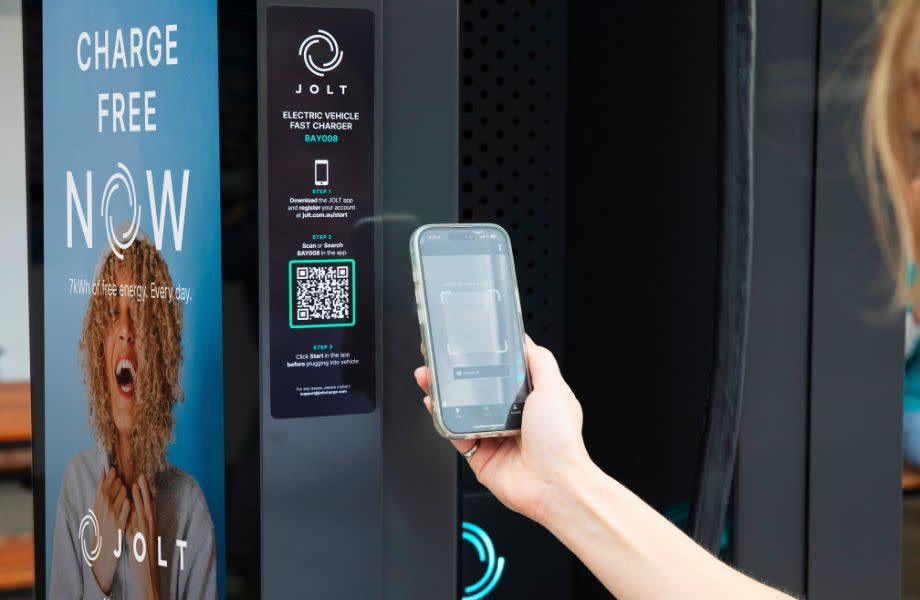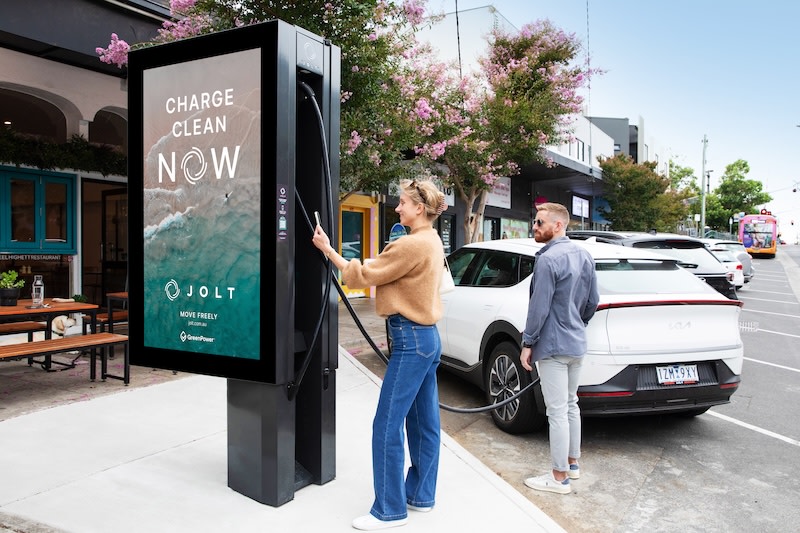Pressure Mounts as EV Charging Becomes the Next Property Benchmark

Australia has passed 350,000 EVs on the road, with almost 16 per cent of new car sales now electric and 70 more models due within the year.
The shift isn’t a future headline—EVs are already parked in your assets: more at the boom gate, tenants asking where to plug in, visitors expecting charging as standard.
And the commercial stakes are real.
The right infrastructure creates a new lease income stream for property owners, while EV drivers typically dwell for around 34 minutes and spend an average of $29 on nearby retail purchases. That behaviour injects up to $100,000 of incremental spend into surrounding retailers each year.
Installing the wrong type of charger locks up bays, frustrates tenants and leaves money on the table.
What matters now is not if you respond, but how: where charging sits, how fast it turns over and who pays for it.
The AC bottleneck
For many property owners, the instinctive move is to install a slow AC (7kW) charger.
On paper it looks like a sustainability gesture until reality hits.
A bay is tied up for hours, serving just 1–3 cars a day.
Throughput is capped, bays clog, and the owner wears the capex, opex, power bill and the admin.
Instead of an amenity, it risks becoming a bottleneck.
The JOLT advantage: Level 3, DC free, fast and clean charging
JOLT changes the economics. We’re the only charging provider giving every driver a free daily top-up (~7 kWh, about 50 km of range).
Delivered in around 15 minutes on a 25kW DC charger, it’s seven times faster than slow AC.
But speed isn’t the only hook.
That free daily charge is habit-forming: drivers return again and again to claim it. They grab the ~15-minute top-up and often charge a little longer; average dwell is ~34 minutes, anchoring incremental spend around your property.
Quick sessions keep bays circulating. The free top-up keeps customers coming back.

Every session is powered by 100 per cent accredited renewable energy, supporting your ESG goals and enabling genuine zero-emission mobility for tenants and visitors.
Installed and operated at zero cost to the host, the charger behaves like a tenant: lease income from JOLT, repeat visitation, daily allocation of advertising on the screen, and up to $100,000 in additional local retail spend each year.
Drivers actively seek out JOLT sites: 70 per cent of customers say they’ve chosen a business because it’s near a JOLT charger, and once there, 80 per cent make a purchase.
“If that charger wasn’t here, I wouldn’t be spending a cent with these businesses. The charger takes me to places I wouldn’t otherwise visit.”
—JOLT customer, Sydney
Landowners and investors: a new income line
This isn’t a sustainability tick. It’s a revenue stream from an asset you already own. Zero capital. Zero energy bills.
Premium infrastructure installed and operated at no cost, with lease payments locked in and a customer flywheel funded by advertising.
Advertisers cover the daily top-up on the charger screens. JOLT pays you to host. Customers spend with your tenants. Incentives aligned.
Hosts also receive 5 per cent of digital screen time to promote the property or priority tenants, a flexible lever for campaigns, events and launches.
“From the very beginning of the process, the JOLT team demonstrated professionalism, expertise, and a seamless approach to implementation.”
—Alexandre Lazourenko, private landowner

Property managers: zero lift
The JOLT app shows live availability, predicts wait times, sends session-complete alerts and applies idle fees to keep bays moving.
It’s backed by a 24/7 hotline. Translation: no chasing overstays, no bill shock, no complaints. Onsite, the charger reads as an amenity, not a friction point.
“The installation process was completely hassle-free for me as the landlord, and JOLT managed everything end-to-end at zero cost to my business—a truly remarkable offering in this space.”
—Alexandre Lazourenko, private landowner
Install fast. Run reliably. Small footprint.
JOLT manages grid assessments, permits and compliance end-to-end, co-ordinating with your team to minimise disruption.
Only one to two bays are needed for a standard deployment.
Once live, the network runs at ~98 per cent charger uptime, and customers dwell for around 34 minutes on average.
Fast sessions mean fewer complaints, more circulation, and more trade for your tenants.
Profitable public charging, already here
“Smart cities of the future are now planning their EV charging networks around retail and urban precincts with high foot traffic, where consumers are ready to spend.”
—Stuart Moffatt, general manager—network growth, JOLT
That vision is already here. JOLT’s model doesn’t just install premium infrastructure at zero cost—it creates customer habits.
The free daily charge is a behavioural anchor: drivers build it into their routines and keep returning to the same site, circulating spend through your tenants and surrounding retailers.
If you’re ready to see how charging can create new income, attract loyal customers and align your site with the next wave of urban growth, the best next step is a conversation:
Contact our team >> Explore how DC fast charging can deliver lease income, attract repeat customers and provide zero-cost infrastructure for your site.
Dive deeper: Download JOLT’s white paper >> Plugging into the Future: How EV Chargers Are Building Communities, Driving Economic Growth and Reimagining Public Infrastructure
The Urban Developer is proud to partner with JOLT to deliver this article to you. In doing so, we can continue to publish our daily news, information, insights and opinion to you, our valued readers.













